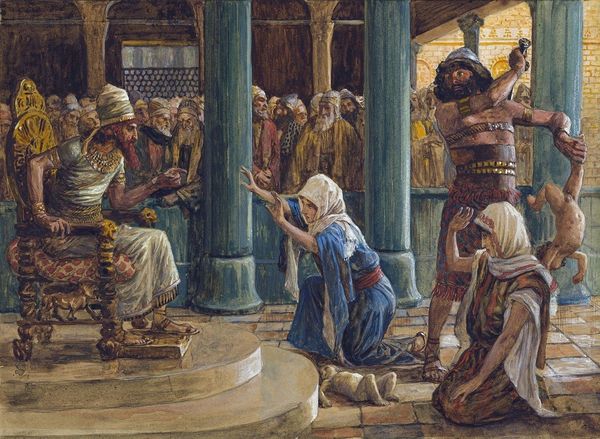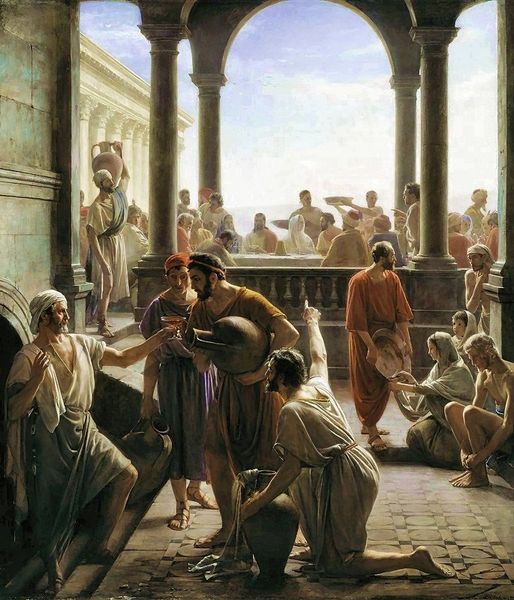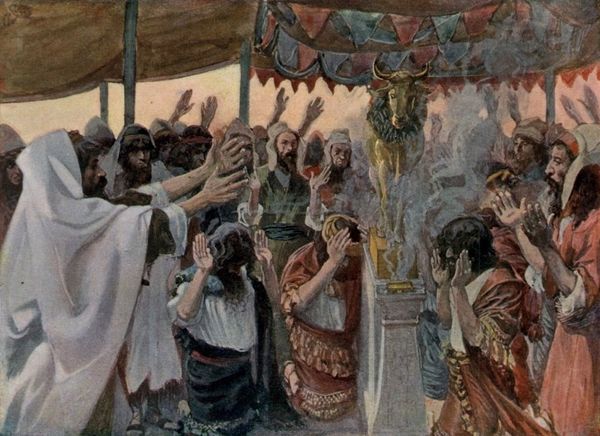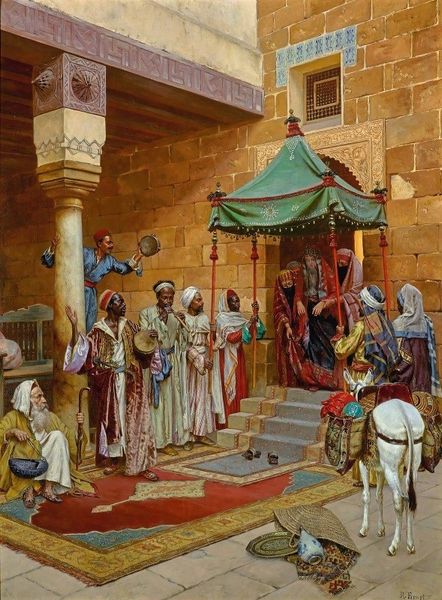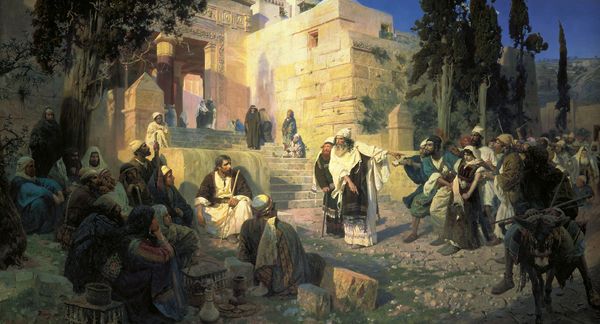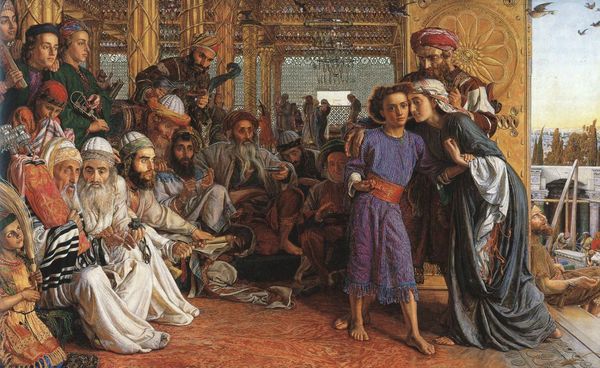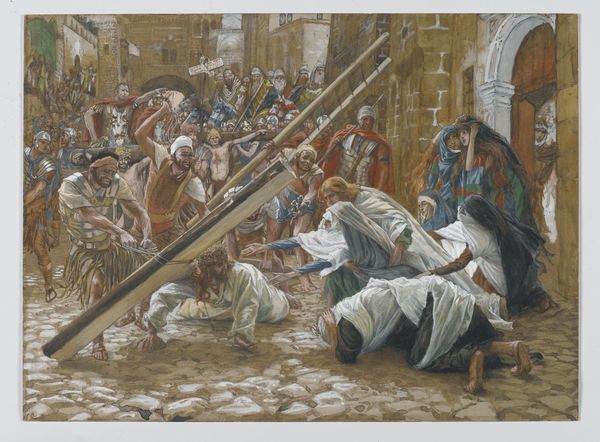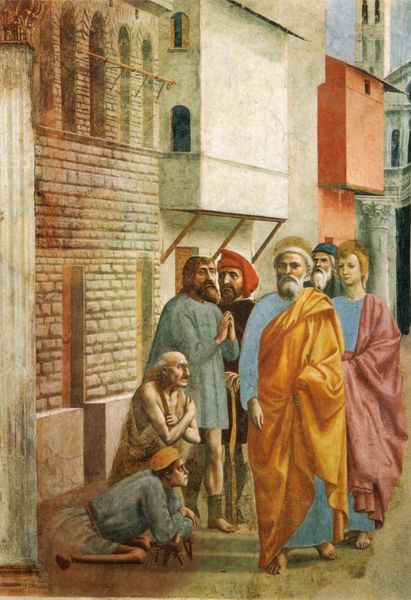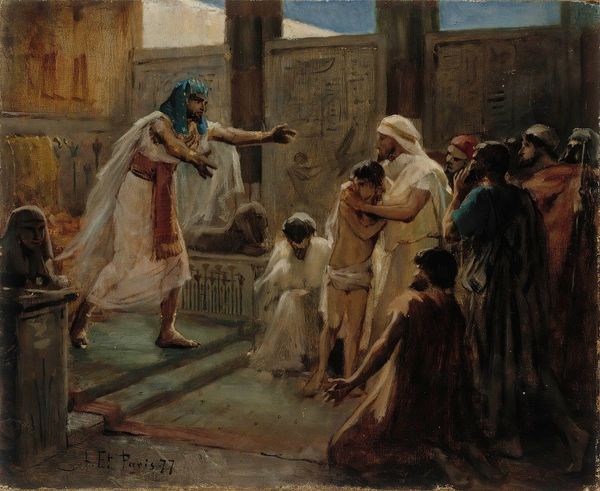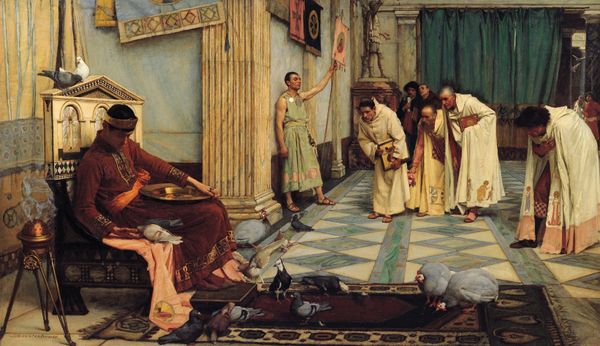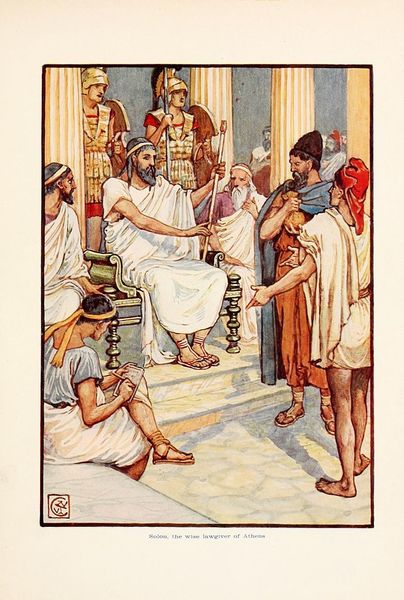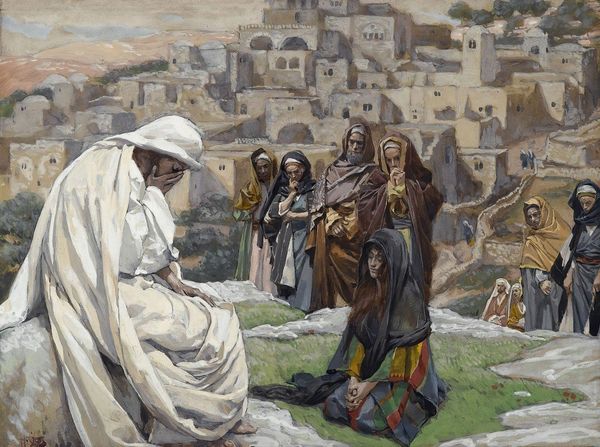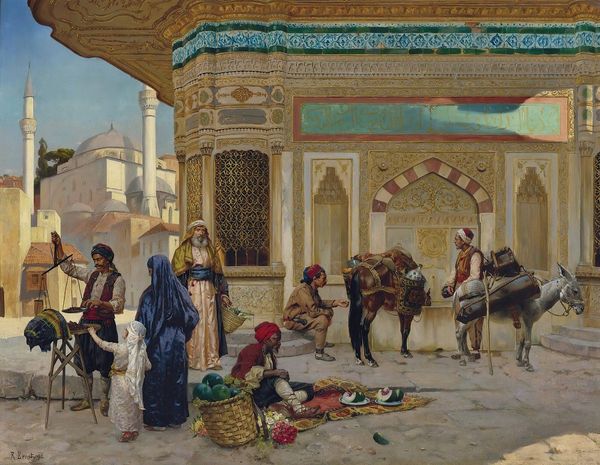
painting, oil-paint
#
gouache
#
narrative-art
#
painting
#
painting
#
oil-paint
#
oil painting
#
mythology
#
history-painting
#
academic-art
#
watercolor
Copyright: Public domain
Curator: Before us hangs a fascinating depiction of "The Wisdom of Solomon" by James Tissot. It is painted using watercolor and gouache. The artwork invites a visceral reaction to a profound moral test. What stands out to you? Editor: Immediate violence! The rawness of the composition—the executioner's upraised arm and that dangling infant. The pallid tonality lends a disturbing premonitory weight to the whole scene. Curator: Indeed. This powerful scene depicts a key story from the Hebrew Bible. King Solomon famously uses a trick to determine the true mother of a baby, when two women both claim the child as their own. He orders the child to be split in half. Editor: Ah, the story solidifies the maternal bond, prioritizing love over possession. I like the focus on bodily integrity; the idea that the authentic connection to this baby means the "true" mother will do everything to prevent them from harm, reflecting patriarchal societal values. How do you understand it? Curator: Solomon is frequently viewed in Jewish tradition as a great sage and an archetype of just rulership, whose understanding and clear judgements flowed from his divinely-granted wisdom. That is symbolised with the child laying at his feet as a testament to a discerning nature. The symbol carries emotional, cultural, and psychological meaning over time as justice being rightly served, what do you make of that concept? Editor: The way the two mothers are positioned creates a dynamic contrast. One woman’s desperate plea echoes the injustice and patriarchal structure inflicted, while the other almost encourages the death of the child in the backdrop. In light of contemporary social issues— the child in these narratives can be regarded as vulnerable people harmed by corrupt establishments! Curator: Tissot was a meticulous artist and an interpreter of history and iconography. Through his choice of symbolism, he urges the audience to think beyond the surface story. Editor: True! When viewed within a critical perspective, there are broader intersectional narratives where race, gender, politics and philosophy play a pivotal role that demands a deeper dive. Thank you for that dive. Curator: My pleasure.
Comments
No comments
Be the first to comment and join the conversation on the ultimate creative platform.
